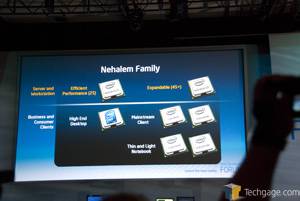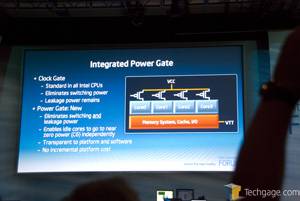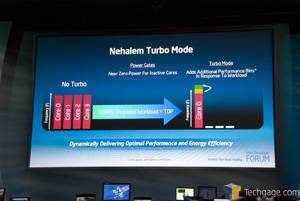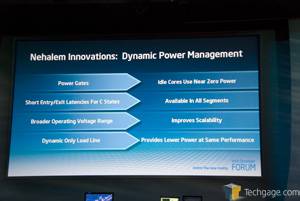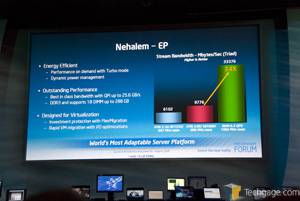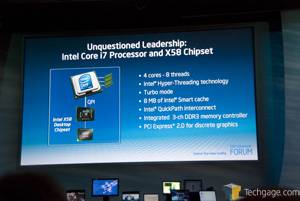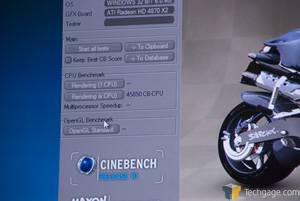From IDF:
During Pat Gelsinger's keynote this afternoon, he touched on many different areas around computing that Intel is playing a large role in, in the coming years, one of which was Nehalem. Pat touched on some of the workstation aspects of the upcoming processor, but we are more interested in the desktop segment, which we will see products for in the coming months.
I will cover all of the Nehalem findings more in depth later in an article, but what was new here was talk about the chip's use in the high-end desktop, mainstream client and thin and light notebook. After the launch, Intel will be wasting very-little time before their Clarksfield mobile counterpart, primarily due to the fact that the benefits to be had are clear, including better battery-life, better performance and better design.
One newly-discussed feature is Turbo Mode (sadly, no special button on the chassis will be required), a hands-off transition that the processor will make during states of core inactivity. If one, two or three of the cores are deemed not necessary, they will shut off completely into a near-powerless state. From that point, extra voltage will be routed into the primary core, essentially increasing performance. This won't apply to just one core, but two or possibly even three. If two cores are inactive, the other two cores could have boosted performance.
Another feature is the 3x memory bandwidth, which Intel is seriously touting, and perhaps for good reason. While we are seeing numbers hovering around 9.776MB/s on our current desktops, the switch to a triple-channel memory controller essentially triples it (more like 3.4x), despite the fact that the exact same memory modules are used. This is a rather incredible feature, but it will all come down to the real-world benefits.
Other features are improved VM, Nehalem vPro, and improved performance. On an overclocked eight-core processor, they scored over 45,000 in Cinebench R10... when our eight-core SKulltrail scored around 25,000, back when we took a look at it back in February. Impressive. We'll update you later with even more details, especially after we will be able to ask Intel themselves specific questions regarding the architecture.
I will cover all of the Nehalem findings more in depth later in an article, but what was new here was talk about the chip's use in the high-end desktop, mainstream client and thin and light notebook. After the launch, Intel will be wasting very-little time before their Clarksfield mobile counterpart, primarily due to the fact that the benefits to be had are clear, including better battery-life, better performance and better design.
One newly-discussed feature is Turbo Mode (sadly, no special button on the chassis will be required), a hands-off transition that the processor will make during states of core inactivity. If one, two or three of the cores are deemed not necessary, they will shut off completely into a near-powerless state. From that point, extra voltage will be routed into the primary core, essentially increasing performance. This won't apply to just one core, but two or possibly even three. If two cores are inactive, the other two cores could have boosted performance.
Another feature is the 3x memory bandwidth, which Intel is seriously touting, and perhaps for good reason. While we are seeing numbers hovering around 9.776MB/s on our current desktops, the switch to a triple-channel memory controller essentially triples it (more like 3.4x), despite the fact that the exact same memory modules are used. This is a rather incredible feature, but it will all come down to the real-world benefits.
Other features are improved VM, Nehalem vPro, and improved performance. On an overclocked eight-core processor, they scored over 45,000 in Cinebench R10... when our eight-core SKulltrail scored around 25,000, back when we took a look at it back in February. Impressive. We'll update you later with even more details, especially after we will be able to ask Intel themselves specific questions regarding the architecture.

